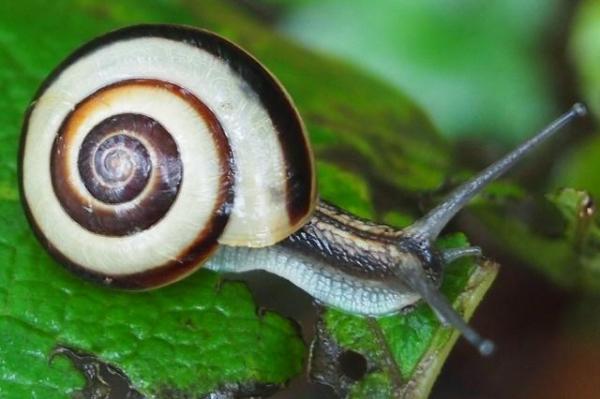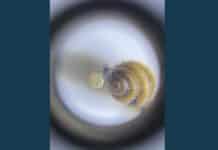
March 31 (UPI) — Scientists in Japan studied the phenomenon of why some land animals move to the tree tops by examining the Japanese tree-climbing land snail.
The Japanese tree-climbing land snail, known as Sapporo mai-mai or Euhadra brandtil sapporo, is found in a small area in the southern part of Hokkaido Island, Japan, in a cool, wet forest, which is full of oak and maple trees.
In the winter, the snails hibernate on the ground in leaf litter, but move to the tree tops in the spring and summer, coming back down to earth in the fall.
Ikuyo Saeki, an associate professor at the University of Tsukuba, collaborated with researchers at Hokkaido University to find out why the land snails leave the dark, humid environment on the ground to move to the light, dry canopy in the trees.
Saeki and her colleagues observed the snails in the trees from observation towers, and on the ground during the different seasons, comparing the snails’ activities with those of the ground-dwelling carabine beetle, which is known to eat land snails.
Researchers collected snails and tied a piece of string around their shells in order to track them and compare survival rates of those in trees with the ones on the ground.
The tree tops were found not to be as dry as originally thought, and that the humidity observed over the summer was 80 percent. Tissue analysis of the snails also showed that tree-dwelling snails eat epiphytic lichens and mosses abundant in the canopy compared to ground-dwelling snails that eat forest leaf litter.
The researchers found that by climbing into the trees in early spring, the snails avoid being eaten by the beetles, who are most active in the summer, or other predators such as raccoon dogs and rodents. The survival rates of the snails in the trees were significantly higher than those on the ground — almost double in some cases.
The study was published in Animal Behavior.




